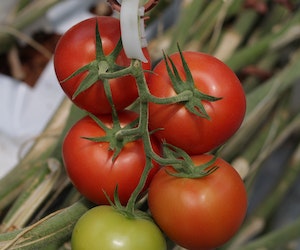
Welcome to the Beginner’s Guide to Tomato Family Plants! Whether you’re an aspiring gardener or a beginner, this comprehensive guide will equip you with essential knowledge about plants in the tomato family, including tomatoes themselves, as well as peppers, eggplants, and potatoes. We’ll cover the nutrients they need, planting tips, and provide you with the most important information to understand 80% of this topic. Let’s get started!
- Tomato Family Overview: The tomato family, Solanaceae, consists of various plants that share similar characteristics. The key members include tomatoes, peppers, eggplants (aubergines), and potatoes. Understanding their common traits will help you cultivate them successfully.
- Essential Nutrients: Tomato family plants require several essential nutrients for healthy growth. The three primary macronutrients are nitrogen (N), phosphorus (P), and potassium (K). Additionally, they need secondary nutrients such as calcium (Ca), magnesium (Mg), and sulfur (S). Micronutrients like iron (Fe), manganese (Mn), zinc (Zn), copper (Cu), boron (B), and molybdenum (Mo) are also necessary, although in smaller quantities.
- Soil Preparation: Choose a well-draining soil with a pH level between 6.0 and 7.0. Amend the soil with organic matter like compost to improve fertility, moisture retention, and drainage. It’s advisable to conduct a soil test to assess nutrient levels and make any necessary adjustments.
- Sunlight Requirements: Tomato family plants thrive in full sunlight, which typically means a minimum of 6-8 hours of direct sunlight per day. Ensure that your garden receives ample sunlight, or consider using containers that can be moved to sunnier spots if necessary.
- Planting and Spacing: When planting tomato family plants, select healthy seedlings or start seeds indoors 6-8 weeks before the last frost date. Transplant them outdoors when the soil has warmed up and the risk of frost has passed. Space the plants according to their mature size to allow air circulation and prevent diseases. Generally, tomatoes require 18-36 inches (46-91 cm) between plants, while peppers and eggplants need 18-24 inches (46-61 cm).
- Watering: Provide consistent moisture to the plants, keeping the soil evenly moist but not waterlogged. Irrigate deeply once or twice a week, depending on weather conditions. Avoid wetting the foliage to prevent diseases, and consider using mulch to retain moisture and reduce weed growth.
- Fertilizing: Apply a balanced, slow-release fertilizer or organic compost at the time of planting. Side-dress the plants with a nitrogen-rich fertilizer after the first fruit set. Follow the instructions on the fertilizer packaging for the appropriate dosage. Over-fertilization can lead to excessive foliage growth with fewer fruits.
- Pruning and Support: Tomatoes, peppers, and eggplants benefit from pruning and support. Remove the suckers (small shoots) that develop between the main stem and branches of tomatoes to encourage stronger growth and better fruiting. Provide cages, stakes, or trellises to support the plants and prevent them from sprawling on the ground.
- Pest and Disease Management: Common pests for tomato family plants include aphids, whiteflies, and tomato hornworms. Monitor your plants regularly and take appropriate measures such as handpicking, using insecticidal soap, or introducing beneficial insects like ladybugs. Diseases like blight and blossom end rot can also affect these plants, so maintain good airflow, avoid overhead watering, and practice crop rotation to minimize the risk.
